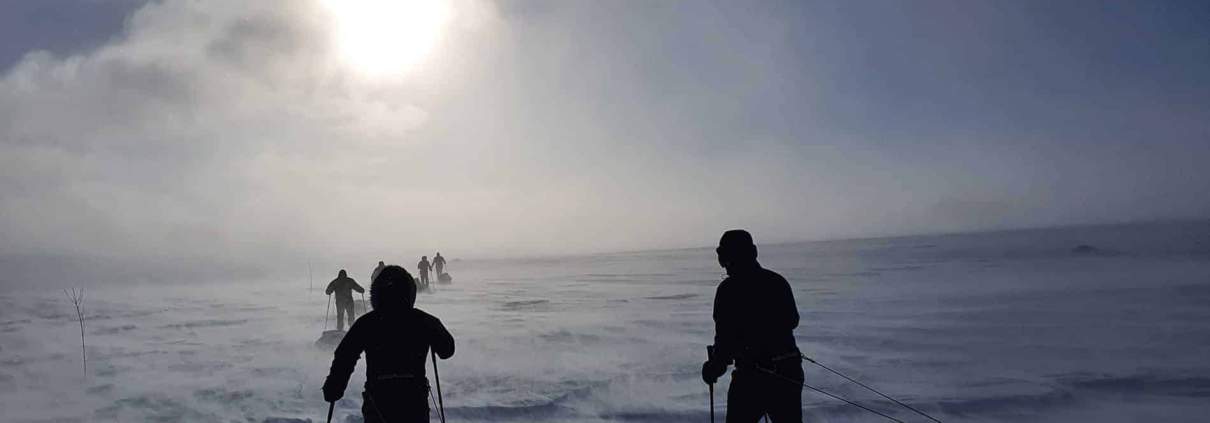Breaking down into pieces, the key to success
Breaking down into smaller pieces: the key to successful expeditions
In this blog update, I would like to share with you a tip that I am frequently asked: how do you keep up with walking 560 kilometers through the icy landscape of Greenland? After all, it seems like an endless and exhausting journey. But really the secret is in breaking down the expedition into smaller pieces. In fact, celebrating small successes is the key to achieving big goals. In this blog, I’ll take you through how we divide up such an expedition and how this helps us stay motivated.
Celebrating small successes
When you face snow, ice, wind and cold every day, it can quickly feel monotonous and heavy. Therefore, it is important to shift the focus. Instead of looking at the end point of 560 kilometers, we look at the milestones in between. This way we can celebrate small successes and stay motivated throughout the expedition.
The milestones of an expedition
The first milestone we celebrate is the end of the first day. It may seem simple, but it is an important moment to realize that we have accomplished the first day. Then we look forward to reaching the first 100 kilometers, which we expect to reach after about five days. After that, Greenland’s highest point at 2,400 meters is our next goal. Step by step we work our way toward the half of the expedition, which amounts to 280 kilometers. The next point on our route is Daitu, an old abandoned Cold War radar station. From there it is about five days of walking to the point where we have only 100 kilometers to cover. And once we reach that 100 kilometers, we know the end is in sight. The last thing we see before we reach our finishing point are the mountains near the finish line. This moment gives us confirmation that we are nearing the end of our expedition.
A daily schedule for success
In addition to dividing the expedition into milestones, it is also important to divide the day itself into several blocks. For us, for example, it works well to divide the day into three eight-hour blocks: eight hours of sleep, eight hours of walking and eight hours for other tasks. By sticking to this rhythm, we can sustain the expedition for days, weeks and even months.
A typical day on expedition
A typical day on expedition follows this rhythm. The alarm goes off at seven and we leave at nine. In the intervening two hours, we dressed, had breakfast and prepared our thermoses with melted snow. Then we break up the tent and pack up our sleds so that by nine o’clock we are ready to leave. During the day, we run eight one-hour shifts, with 10-minute breaks between each shift. During these breaks we eat and drink something before walking for another hour. At the end of the day, around six in the evening, we completed our eight hours of walking. Then we set up the tent, build a wall of snow and prepare for the night. Between seven and ten in the evening, it is time for the evening ritual, where we melt snow for our food and drink. Around eleven o’clock it is time to go to sleep so we can get our eight hours of sleep.
Conclusion
Breaking down an expedition into smaller pieces and celebrating small successes is the key to achieving big goals. By focusing on intermediate milestones and dividing the day itself into blocks, we can stay motivated and successfully complete the expedition. Achieving 560 kilometers may seem impossible, but by working step by step and celebrating small successes, we can reach our goal.
🗺️ Our live position on Greenland.
📢 Read all previous posts.
Sign up for the Expedition Newsflash.
During the expedition, receive alerts of new blogs in your mail.
[mc4wp_form id=”4505″]











Leave a Reply
Want to join the discussion?Feel free to contribute!